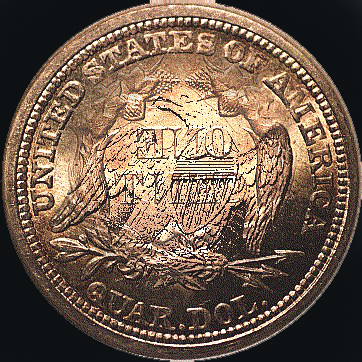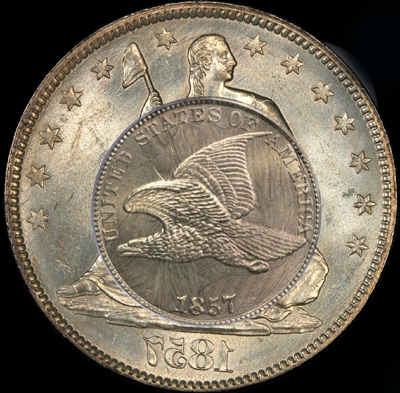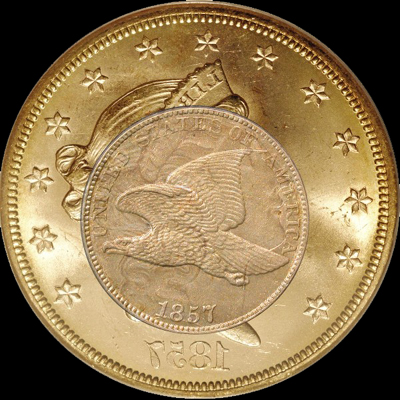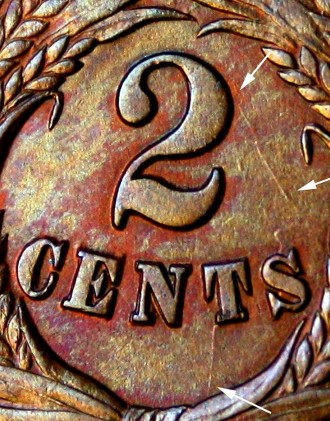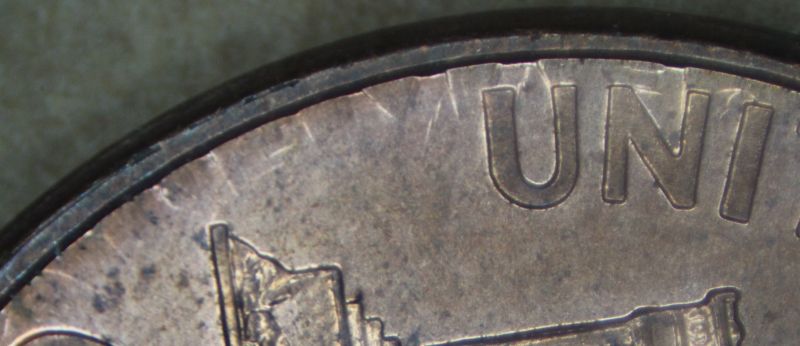Mule Die Clashes
In Q. David Bowers’ 1996 book, Enthusiast’s Guide to Flying Eagle and Indian Cents extensive notes regarding these coins were presented. In light of Chris’ (Pilliod) study and the fact that no actual coins exist from these die combinations, Bowers concluded that these clashed dies were not the product of surreptitious behavior at the Mint at all*. It was suggested that these were caused by accident during the changing of the dies during normal coinage production.
* After I (Tom DeLorey) first identified the 1857 Flying Eagle cent with clash marks on the obverse die from the obverse die for a Liberty Seated half dollar in 1977, I attributed the probable cause of the clash marks to the nocturnal play time of the Mint’s night watchman, Theodore Eckfeldt, who was known to have made and sold several plain-edged 1804 silver dollars c.1858. I suspect that Eckfeldt actually did make our hypothetical cent /quarter, cent / half and cent / double eagle mules in 1857, since several of the dies were later used for normal business strikes, but that the pieces never became known in the hobby as he may not yet have worked up the nerve to attempt to sell them.
The above exurbs were taken from Rick Snow’s book “The Flying Eagle & Indian Cent Attribution Guide; on-line Edition 2011.
For more information concerning mule dies follow this LINK
1857 Seated Liberty Quarter dollar reverse die clashed with a 1857 Flying Eagle Cent reverse die. Picture courtesy of Rick Snow. LINK
1857 Seated Liberty Half dollar obverse die clashed with a 1857 Flying Eagle Cent reverse die. Picture courtesy of Rick Snow. LINK
1857 Liberty Double Eagle ($20.00 gold piece) obverse die clashed with a 1857 Flying Eagle cent obverse die. Picture courtesy of Rick Snow. LINK
MUDC-2c-1854-01
Images are courtesy of John D. Call
1864, 2 cent piece clashed with an obverse Indian Head cent die.
For the full story behind this mule die clash follow the – LINK
1999 Lincoln cent mule clash
Link: MUDC-1c-1999-01
